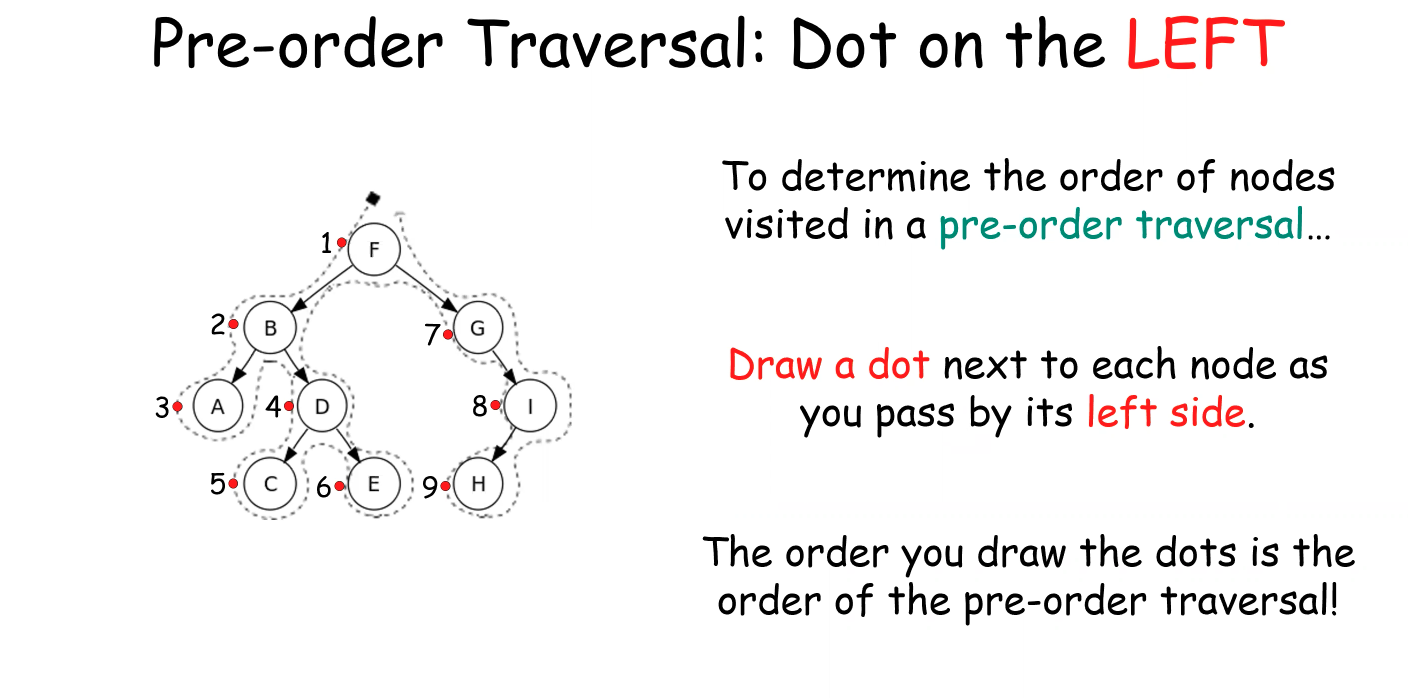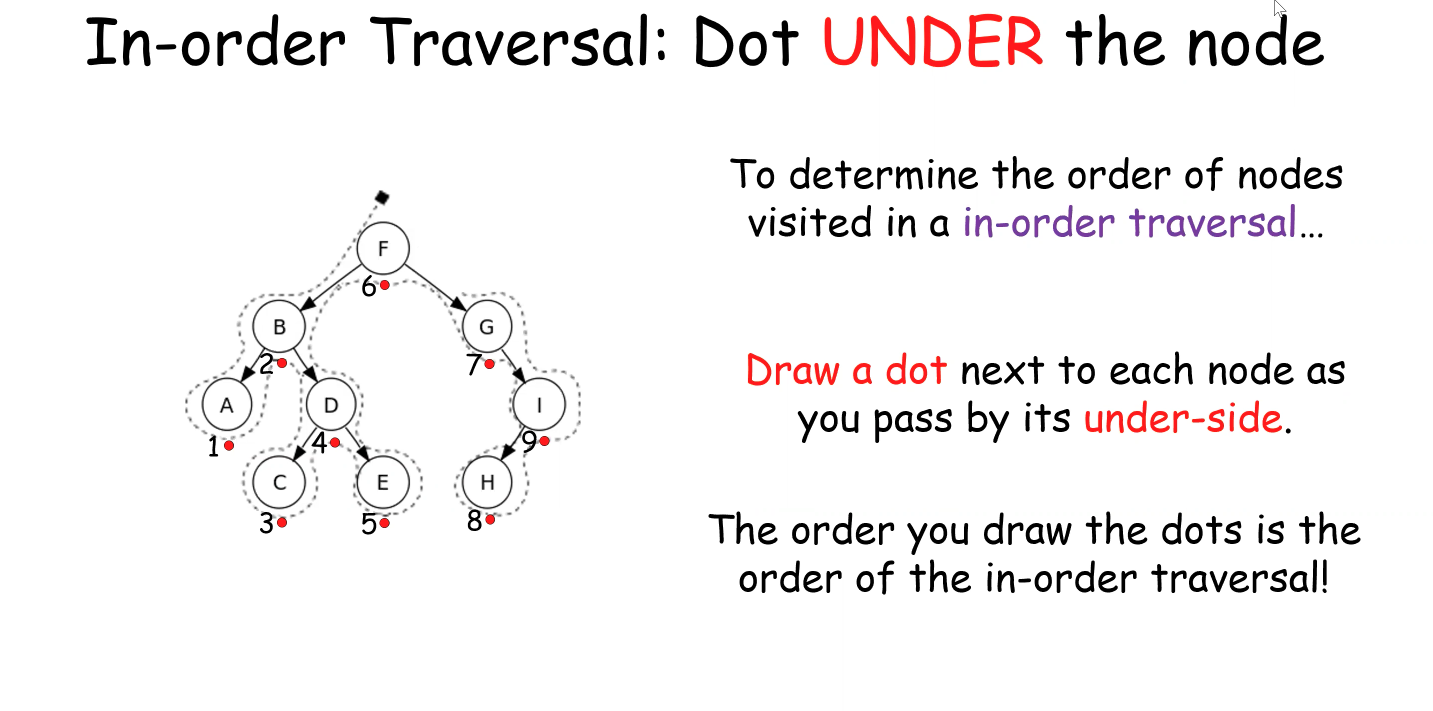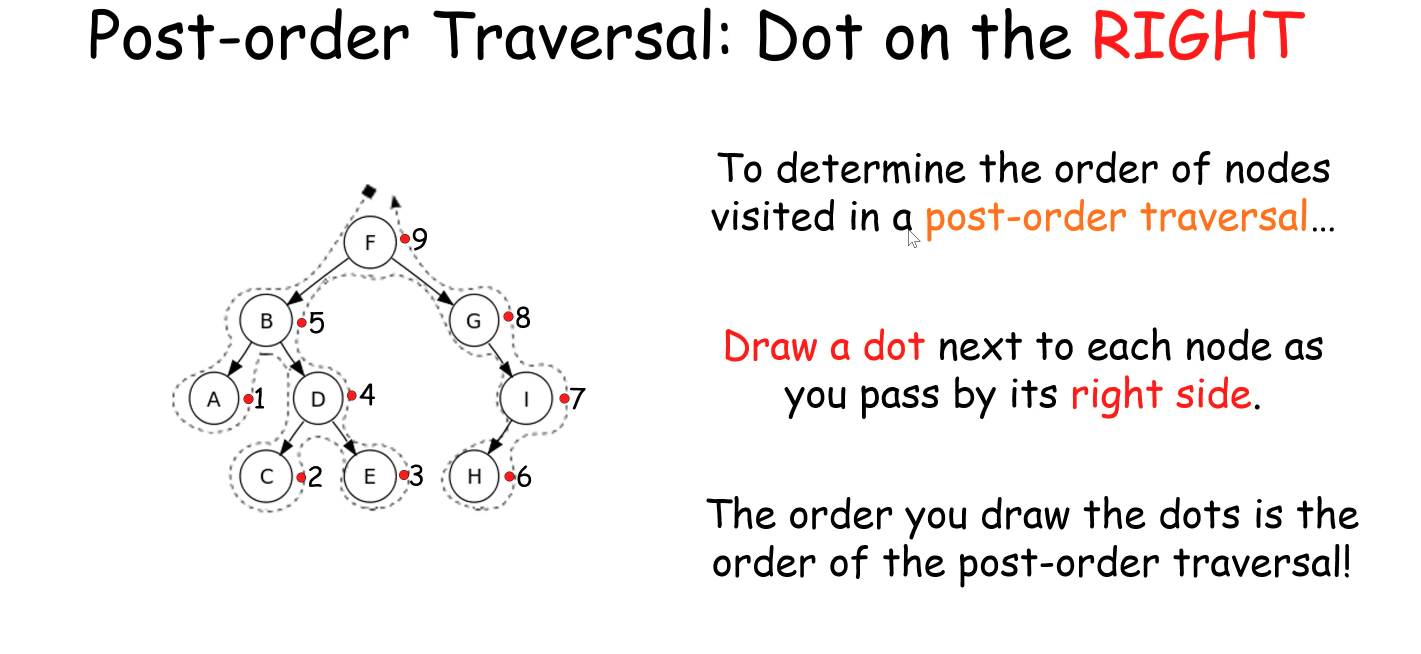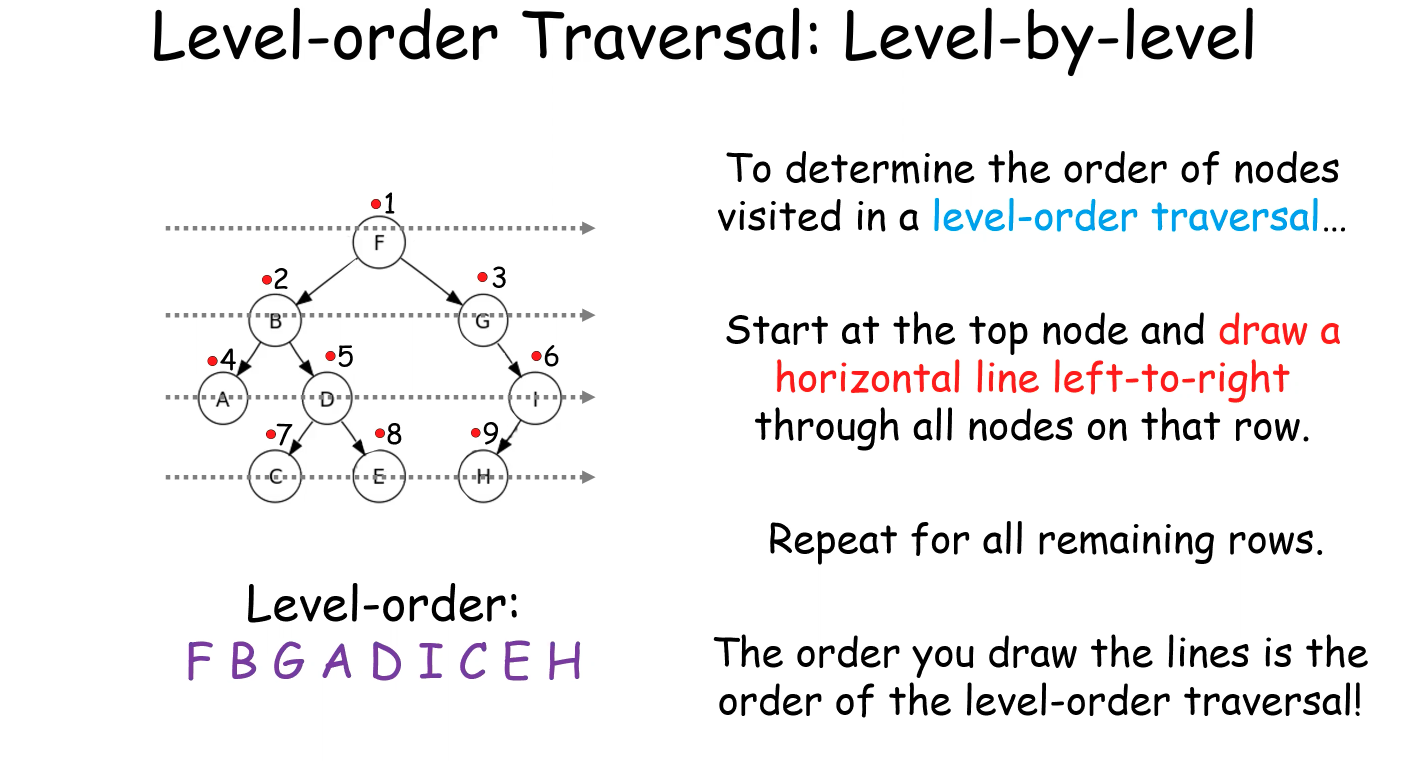
Quick Sort
Select an arbirary item from the array and set it as P.
Move items smaller than or equal to P to the left and bigger than P to the right.
void QuickSort(int Arr[], int First, int Last)
{
if (Last-First >= 1) {
int pivotIndex;
pivotIndex = Partition(Arr, First, Last);
QuickSort(Arr, First, pivotIndex-1);
QuickSort(Arr, pivotIndex+1, Last);
}
}
int Partition(int a[], int low, int high)
{
int pi = low;
int pivot = a[low];
do
{
while (low <= high && a[low] <= pivot)
low++;
while (a[high] > pivot)
high-- ;
if (low < high)
swap(a[low], a[high]);
} while (low < high);
swap(a[pi], a[high]);
pi = high;
return pi;
}Big-O Analysis: nlog_2(n)
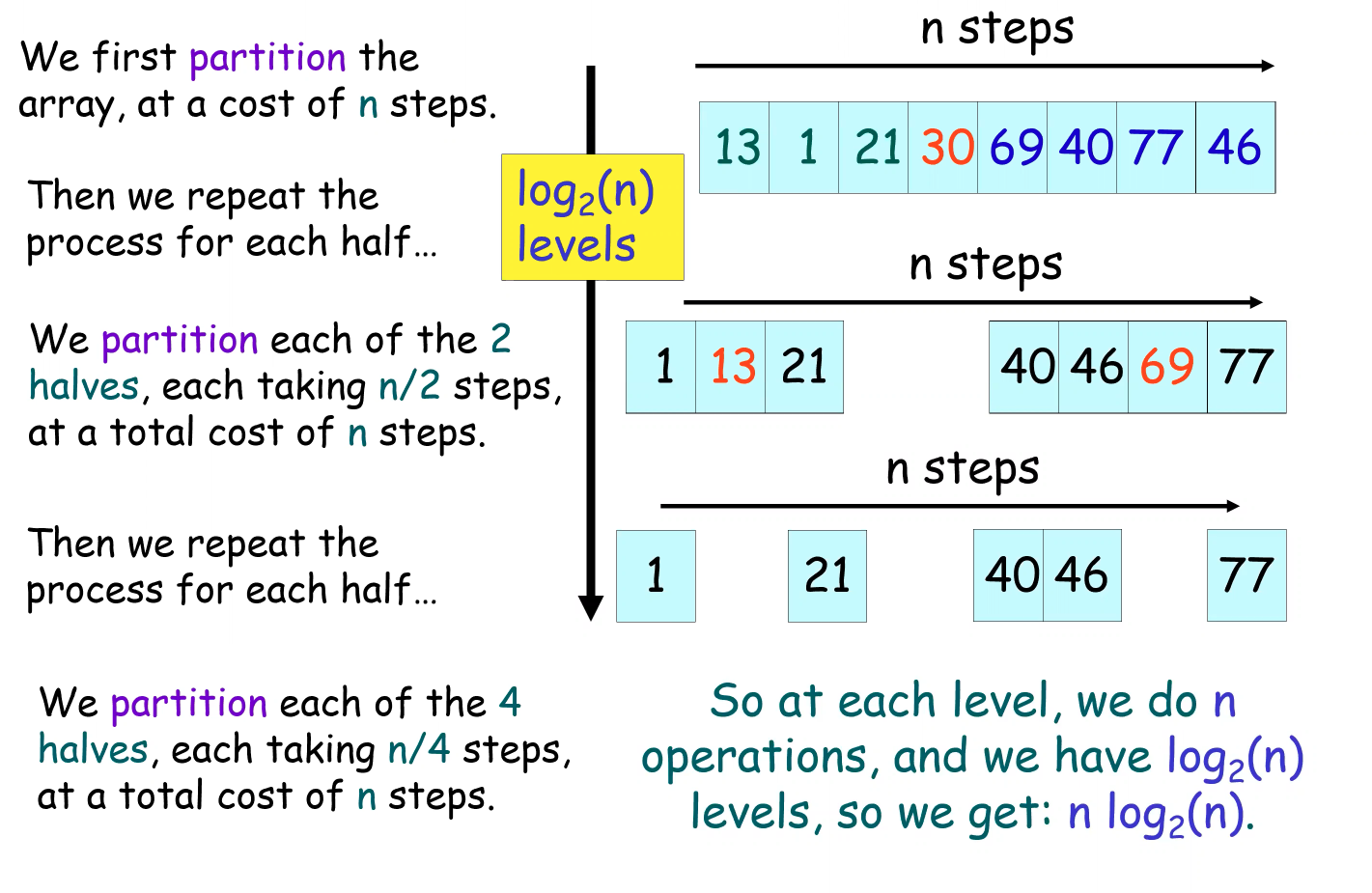
Big-O Worst Case Scenario: n^2
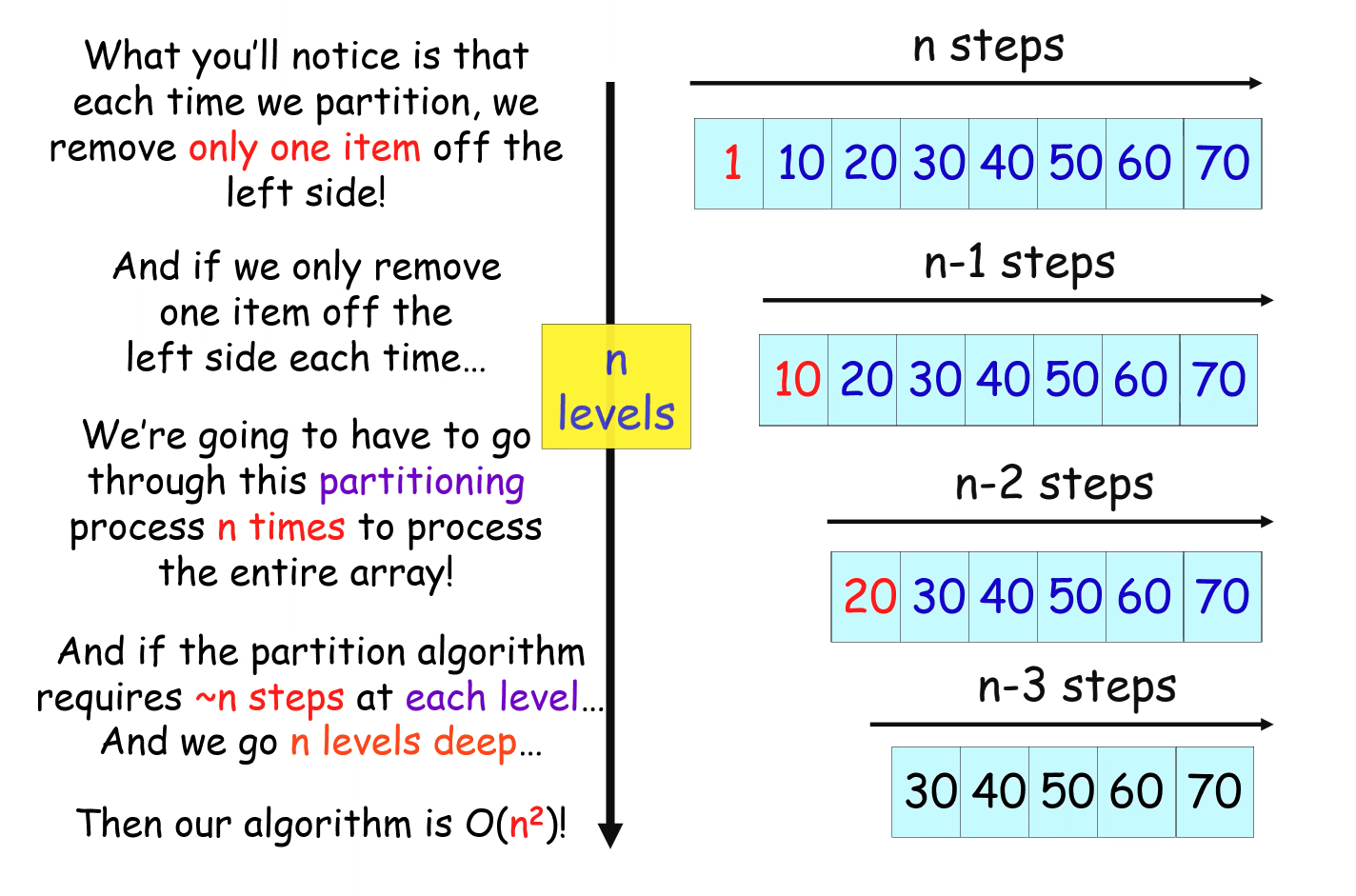
If the items are mostly sorted, or have to do it in a reverse order, avoid quick sort!
Questions
- Can it be applies easily to sort items within a linked list? Yes
- Is quick sort a "stable" sort? No
- Does quick sort use a fixed amount of RAM, or can it vary? Fixed.
- Can it be parallelized across multiple cores? Yes
- When might you use quick sort?
Merge Sort
The basic merge algorithm takes two-presorted arrays as inputs and outputs a combined, third sorted array.
void merge(int data[], int n1, int n2)
{
int i=0, j=0, k=0;
int *temp = new int[n1+n2];
int *sechalf = data + n1;
while (i<n1 || j<n2)
{
if (i==n1)
temp[k++] = sechalf[j++];
else if (j==n2)
temp[k++] = data[i++];
else if (data[i] <= sechalf[j])
temp[k++] = data[i++];
else
temp[k++] = sechalf[j++];
}
for (i=0; i<n1+n2; i++)
data[i] = temp[i];
delete[] temp;
}Instead of passing in A1, A2, and B, you pass in an array called data and two sizes: n1 and n2.
The function also uses new/delete to allocate temporary array for merging.
Big-O Analysis: n*log_2(n)
There is not really worst case scenario for merge sort
Questions
- Can merge sort be applied easily to sort items within a linked list? Yes
- "stable"? Yes
- Can it be parallelized across multiple cores? Yes
Summary
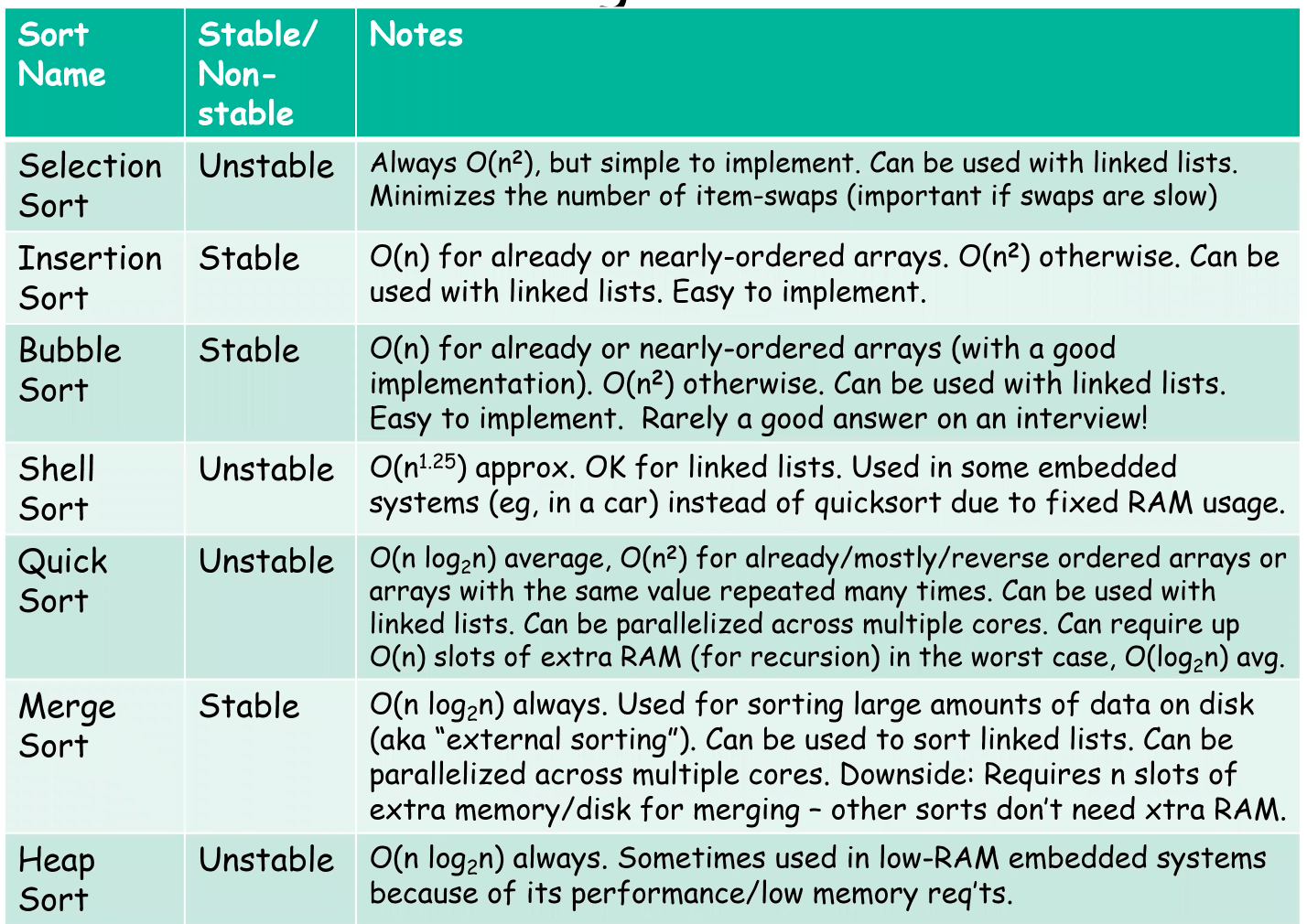
Trees
- To organize hierarchial data
- To make information easily searchable
- To simplify the evaluation of mathematical expressions
- To make decisions
Binary Tree
In a binary tree, every node has at most two children nodes.
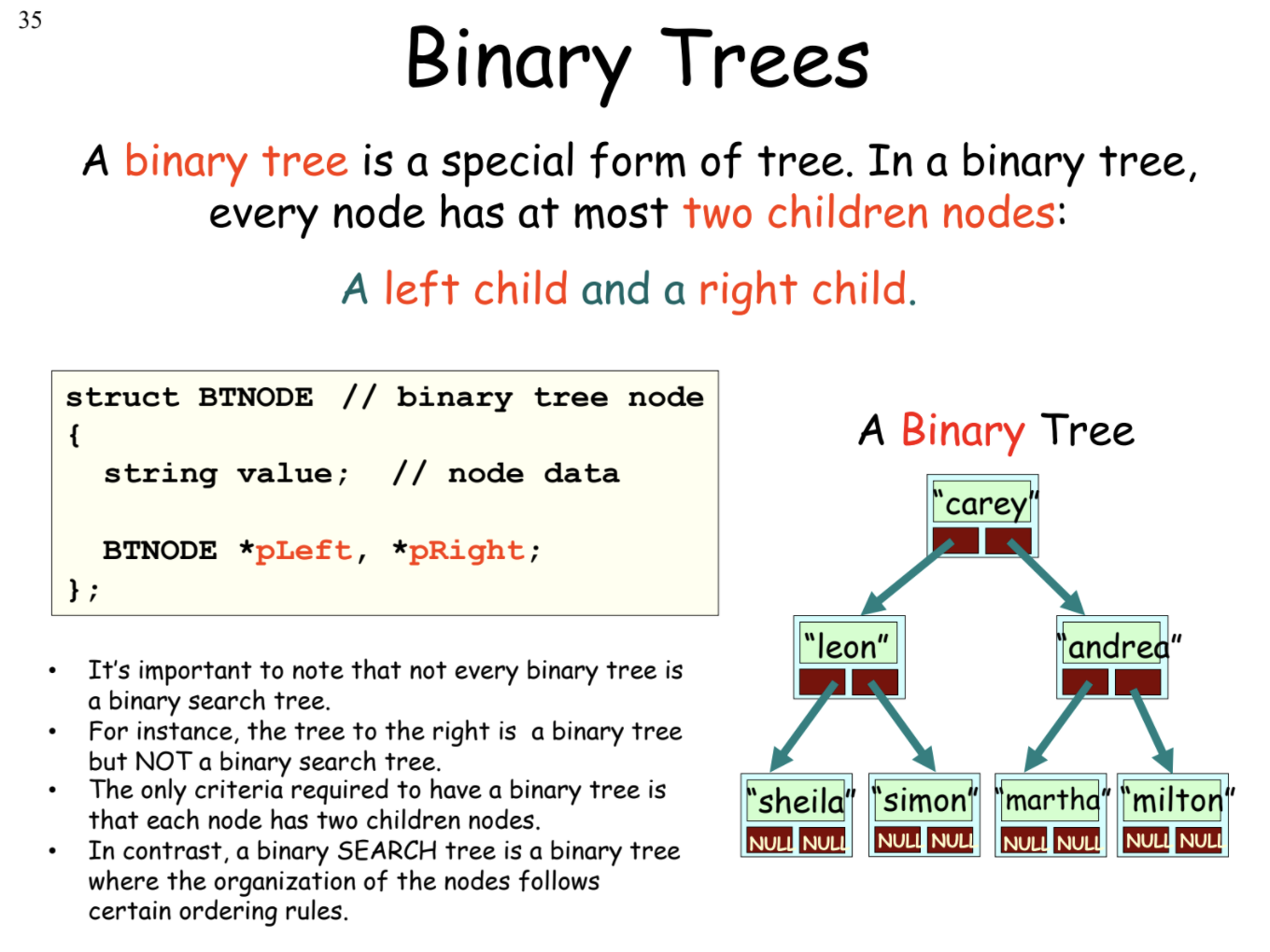
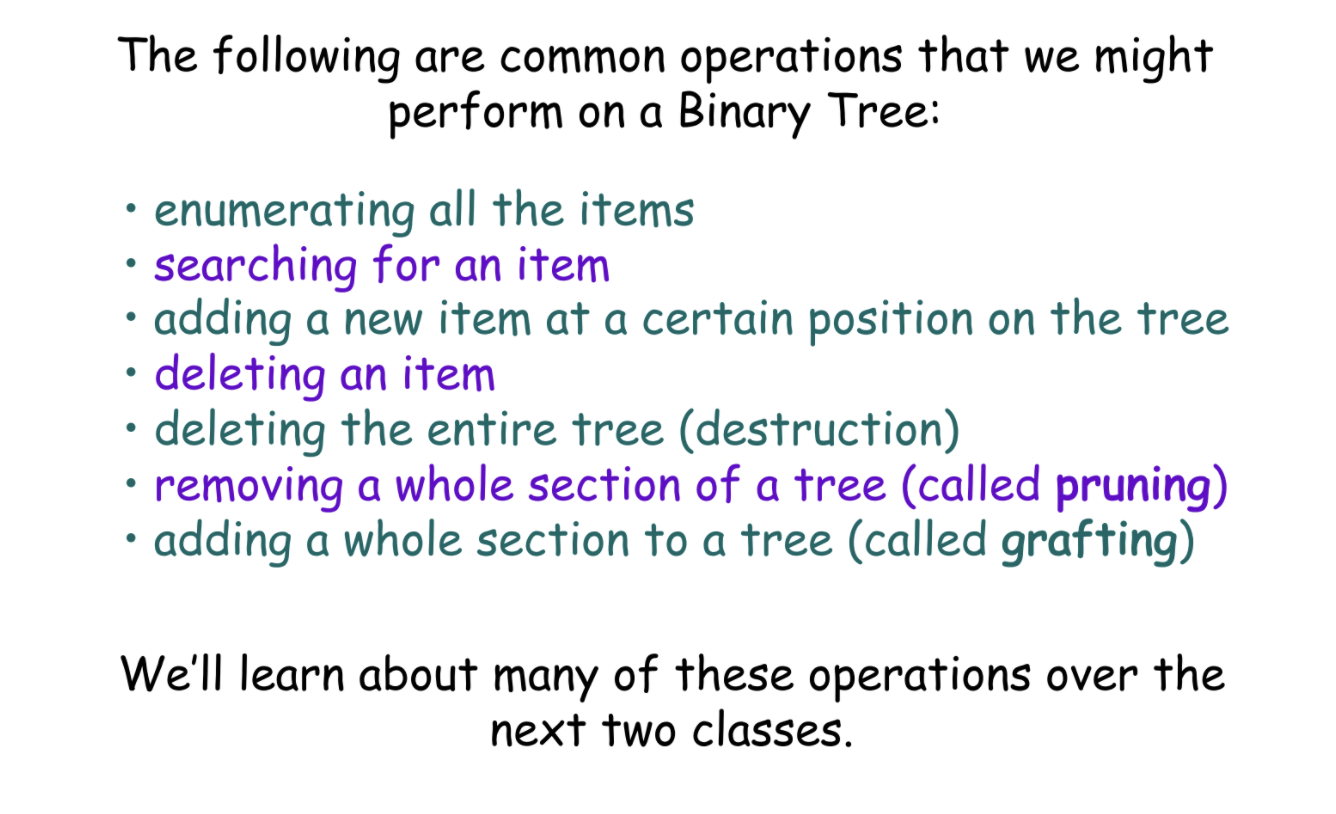
Traversal
Pre-order Traversal
- Process the current node.
- Recursively call PreOrder on the left sub-tree.
- Recursively call PreOrder on the right sub-tree.
In-order Traversal
- Process the nodes in the left sub-tree
- Process the current node
- Process the nodes in the right sub-tree
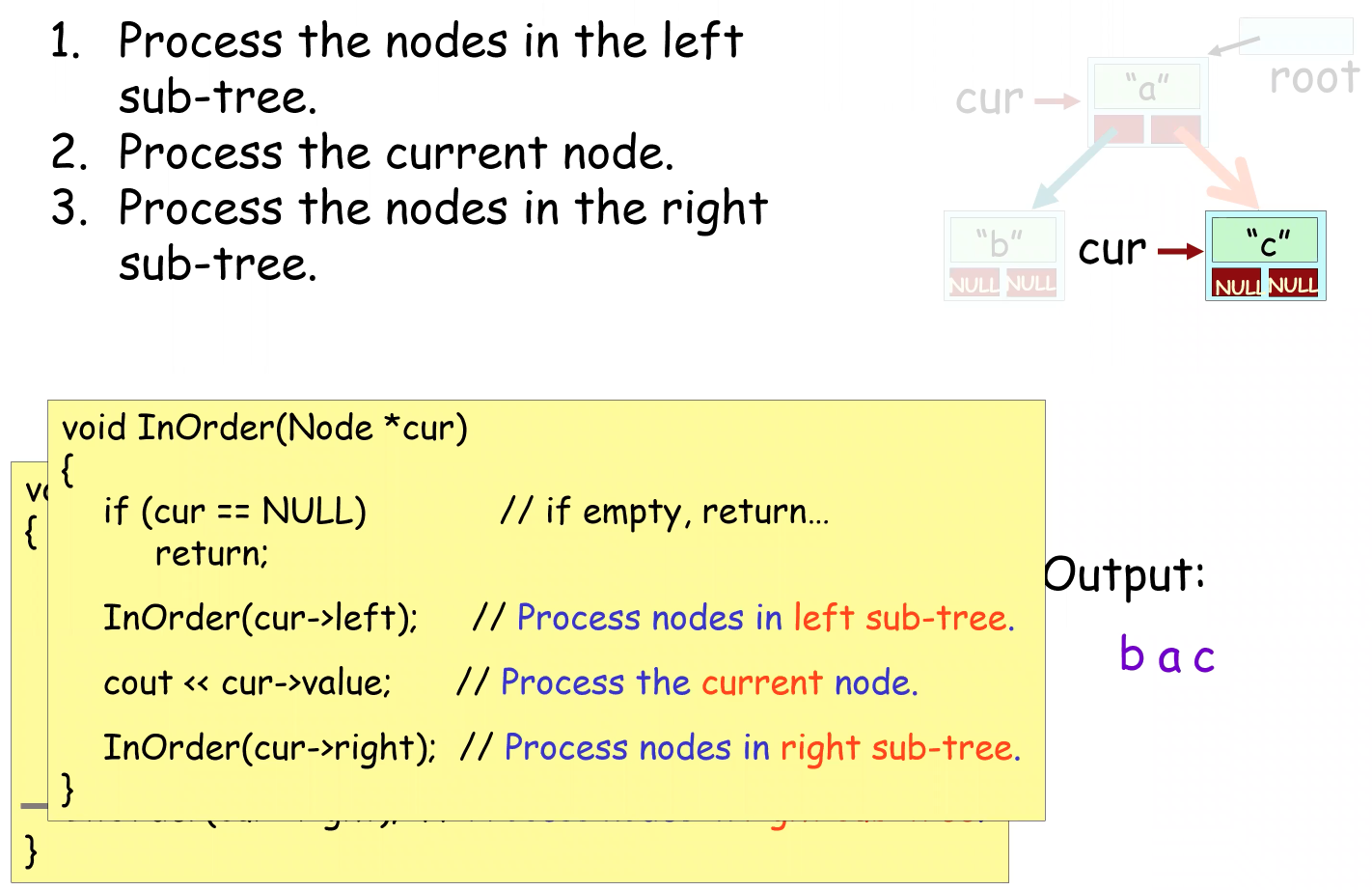
Post-order Traversal
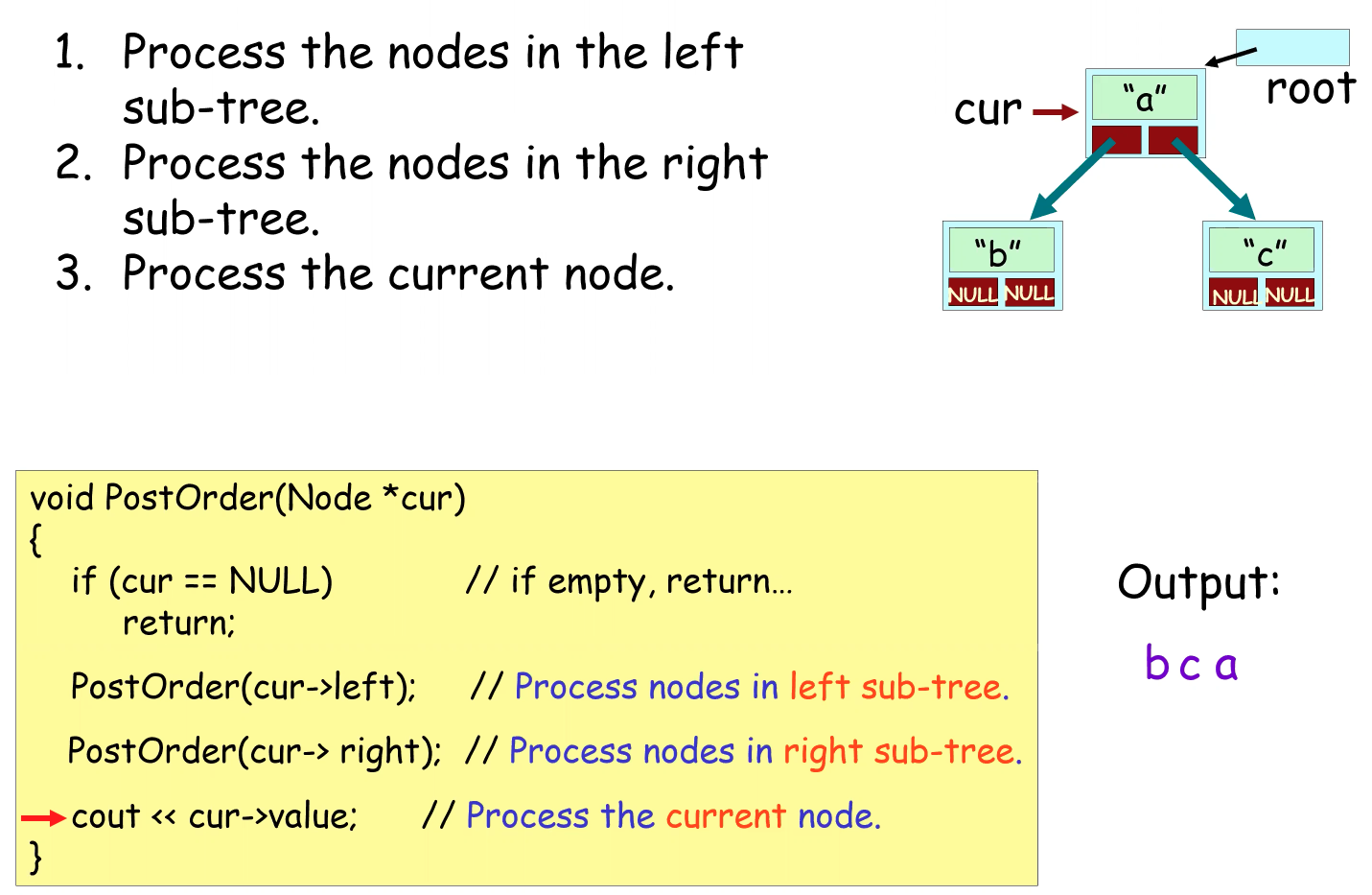
Level-order Traversal
Big-O for traversal: O(n)
N nodes in a tree. As a traversal must visit each node in the tree, no matter what traversal is, O(n).
Class Challenge
1. In-order?
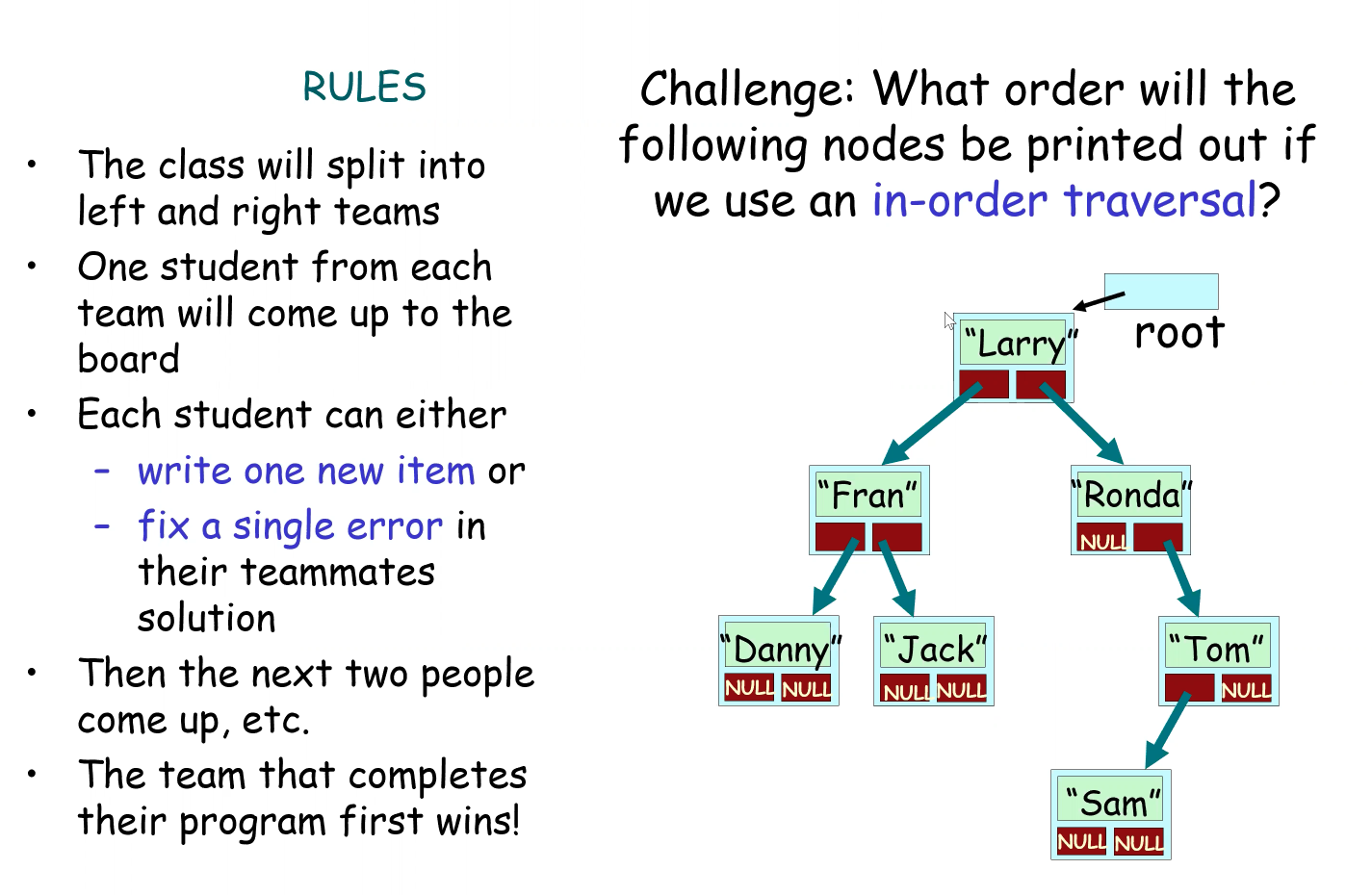
Start from far-left:
Danny-Fran-Jack-Larry-Ronda-Sam-Tom
Handy Tricks (Draw Lines and Dots)
선과 점을 그리는 것으로부터 각 Traversal이 어떤 순서로 진행될지 예측할 수 있다.
